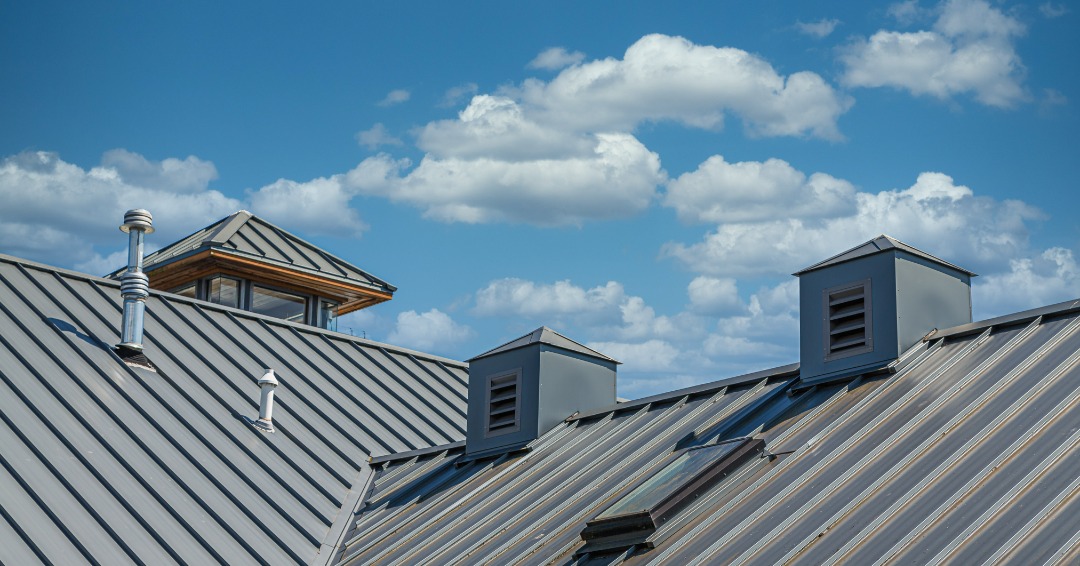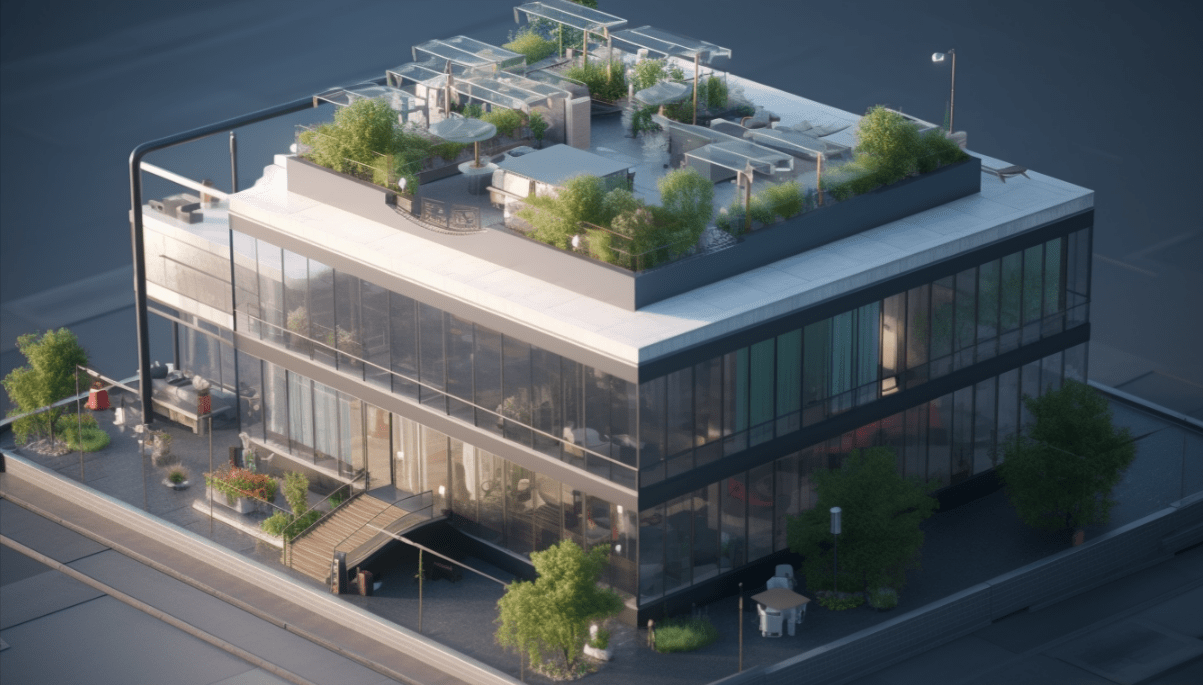In the era of green businesses and sustainability, making eco-friendly choices is more than just a trend—it’s a responsibility. In the United States, we put 11 million tons of asphalt shingles into landfills every year! Granted, shingles aren’t as often used in newly-built commercial properties, there’s still plenty of waste to go around, and solutions that we have at our disposal.
Not only can green roofing options reduce your carbon footprint, but they can also lead to energy savings and even tax benefits (your company accountants will love that!). So, what are some of these eco-friendly roofing options? Let’s delve into this topic.
Understanding Eco-Friendly Roofing
Eco-friendly roofing refers to roofing materials and systems that are sustainable, energy-efficient, and have minimal impact on the environment. These materials are often recyclable or made from recycled materials, reducing waste and conserving resources. Additionally, many of these roofing options are designed to be energy-efficient, helping to reduce your building’s energy consumption and lower your utility bills.
But the benefits of eco-friendly roofing extend beyond environmental sustainability and cost savings. Choosing green roofing can also improve your business’s brand image, showing your customers that you are committed to sustainability. Moreover, depending on your location, you may also qualify for tax incentives or rebates for implementing eco-friendly building practices.
Top 7 Eco-Friendly Roofing Systems
Let’s explore seven popular eco-friendly roofing options, each offering unique benefits and considerations:
1. Solar Panels
Solar panels are definitely the first “green” commercial roofing system that comes to mind. The panels turn your roof into a source of renewable energy, reducing your dependence on fossil fuels. While the initial investment can be significant, the long-term energy savings can make solar panels a cost-effective choice. Plus, they can be installed on various roofing materials, making them a versatile option.
2. Green Roofs
Green roofs, or vegetative roofs, are covered with plants, which provide natural insulation, reduce stormwater runoff, and help improve air quality. They also create a pleasant aesthetic and can even serve as a habitat for local wildlife.
3. Cool Roofs
Cool roofs are designed to reflect more sunlight and absorb less heat than standard roofs, helping to keep your building cooler and reduce your air conditioning needs. They’re especially beneficial in hot climates.
4. Metal Roofing
Metal roofing is durable, recyclable, and energy-efficient. It can also be coated with reflective finishes to enhance its energy efficiency further.

5. Recycled Shingle Roofing
Recycled shingles are made from waste materials like plastic, wood fiber, and rubber. They’re a great way to recycle these materials and prevent them from ending up in landfills.
6. Rubber Roofing
Rubber roofing, often made from recycled tires, is durable, energy-efficient, and recyclable. It’s also resistant to weather damage, making it a long-lasting option.
7. Slate or Clay Tiles
Slate and clay tiles are natural materials that are durable, recyclable, and provide excellent insulation. They’re also aesthetically pleasing, adding a classic touch to your building’s exterior.
Choosing the Right Eco-Friendly Roof for Your Business
When choosing an eco-friendly roof, you’ll need to consider factors like your local climate, your building’s design, and your budget. Consulting with a knowledgeable roofing contractor can help you make an informed decision that suits your specific needs and priorities.
Conclusion
Adopting eco-friendly roofing options is a fantastic way to demonstrate your business’s commitment to sustainability, all while reaping the benefits of energy savings, durability, and potential tax incentives. The options are varied, ensuring there’s a green roofing solution that fits every business’s needs and budget. Remember, every step towards sustainability counts, and choosing an eco-friendly roof is a significant stride in the right direction.
Frequently Asked Questions (FAQ)
1. How much more do eco-friendly roofing options cost compared to traditional materials?
The cost of eco-friendly roofing materials can vary widely based on the specific material and your location. Some options, like recycled shingles, may be comparable in price to traditional materials, while others, like solar panels or green roofs, may have a higher upfront cost but can provide significant energy savings over time.
2. Are eco-friendly roofs as durable as traditional roofs?
Yes, many eco-friendly roofing options are highly durable. For example, metal roofs, slate or clay tiles, and rubber roofs are known for their longevity. As with any roofing material, proper installation and maintenance are key to maximizing your roof’s lifespan.
3. Can I install an eco-friendly roof on an existing building, or is it only for new construction?
Many eco-friendly roofing options can be installed on existing buildings, although it can depend on the specific material and the condition and design of your current roof. A professional roofing contractor can assess your building and recommend the best options for your situation.
4. How can I find a contractor who specializes in eco-friendly roofing?
Many roofing contractors today are knowledgeable about eco-friendly options. When looking for a contractor, be sure to ask about their experience with green roofing materials. You can also check if they have any certifications related to green building practices.
By taking the time to research and consult with experienced professionals, you can find an eco-friendly roofing option that suits your business’s needs, benefits the environment, and helps you save on energy costs in the long run.

